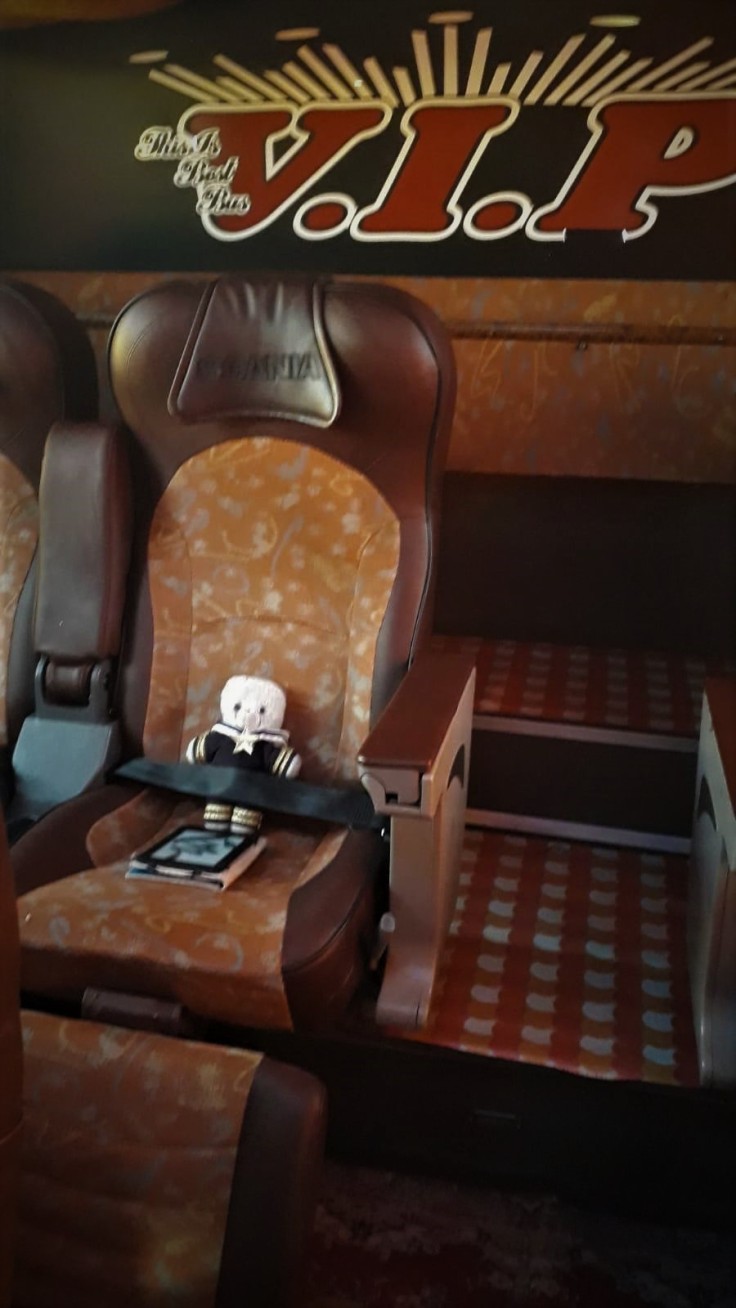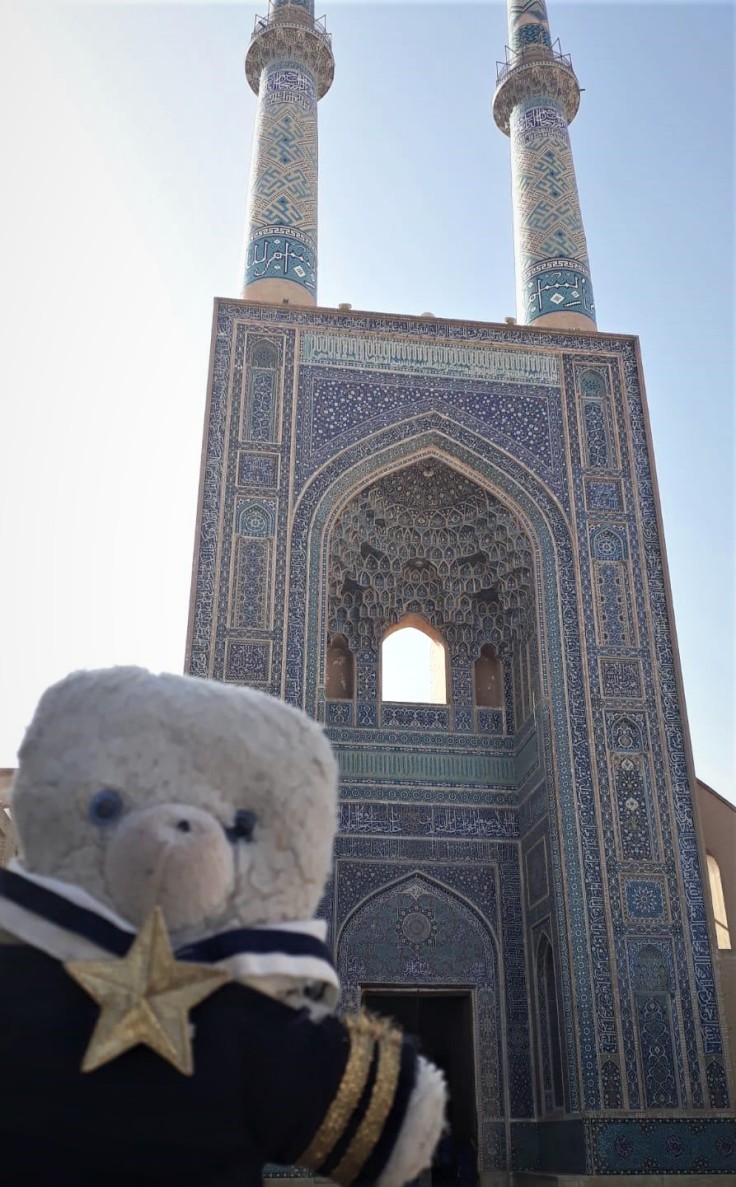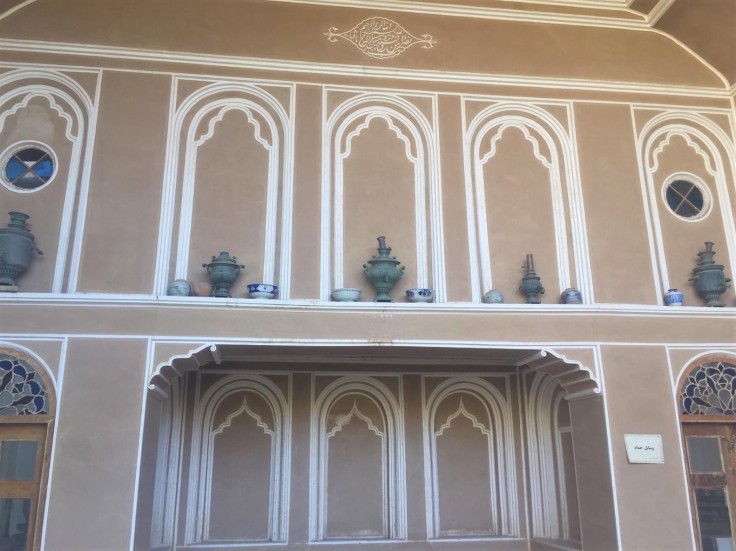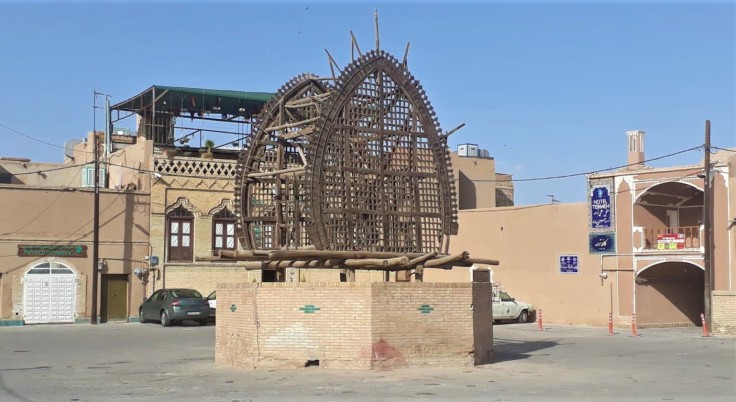
I survived the six hour journey in my VIP bus – I have to say it was quite comfortable and I had my Kindle with me to keep me busy. What I noticed was the change in scenery en route – from green trees to dry land. I met a nice Iranian man who wanted to have a chat and obviously was very impressed by what Pasteur and Napoleon had achieved. Conversation was a bit difficult because he didn’t use any verbs and they were replaced by ‘OK’ but he was kind enough to point out some features during our journey.

With its winding lanes, mud-brick houses and rooftops, Yazd has its own charm. On a flat plain ringed by mountains, the city is lodged between Dasht-e Kavir and Dasht-e Lut, a true city of the desert. Originally settled 5000 years ago, Yazd has an interesting mix of people, 10% of whom are Zoroastrian and is very much the centre of this ancient religion.

I decided to have a walk towards the centre and the bazaar which only opened on Saturday. The first monument that caught my eye was the Amir Chakmaq Mosque Complex but I wasn’t able to visit it, however I did take a picture!

I continued heading north and went to visit the Masjed-e Jameh mosque. Soaring above the old city, this building is decorated with a tiled entrance portal (one of the tallest in Iran), flanked by two 48m-high minarets and adorned with 15th century inscriptions. Built during that time, the mosque is built on 12th century foundations over a former fire temple. You might notice on some of the tiles the ‘gardoneh mehr’ (swastika symbol) which in this context represents infinity, timelessness, birth and death, and can be found on Iranian buildings dating back as 5000 BC.




After I went to the Old City, which according to UNESCO is one of the most ancient settlements on earth. The 2000 or so Qajar-era houses, made from sun-dried mud brick are dominated by ‘badgirs’ (windtowers) on almost every rooftop, essentially an ancient form of air conditioning and a reminder of the extreme heat of summer. On recommendation of the guide, I decided to wonder around the narrow streets and ended up visiting a traditional house. By that stage I was very thirsty and went to the rooftop of the Art Centre which provided a fantastic view on the rooftops and the sunset. It was relaxing and I was encouraged not to use Wifi as per the the sign the owners had put up!





I went to the Orient Hotel roof-top restaurant for dinner that evening, with a super nighttime view on the Masjed-e Jameh mosque. I had aubergines, camel, a vegetarian curry and of course… rice. The food was delicious and I walked home for a relaxing evening.





In the morning I went to the Bazaar as it wasn’t open on Friday. I got lost in the streets and took the opportunity to take pictures of the doors. In Yazd doors have two different knockers on each door – one for women and one for men. It is important to know who is knocking on the door so the appropriate gender can open the door, and each knocker gives a different sound, thereby knowing whether a man or woman is knocking. I wouldn’t know which one to knock on as being a Teddy Bear I was raised gender neutral!


Another interesting feature that is local only to Yazd are the ‘Nakhl’ which you can stumble upon across the city. It is linked to a Shia religious ritual, Nakhl Gardani, carried out on the day of Assura for commemorating the death of Husayn ibn Ali, the grandson of the prophet Mohammad and third Shia Imam. The Nakhl wooden structure is used as a symbol of the Imam’s coffin and Nakhl Gardani is the act of carrying the former from one place to another, resembling an Imam’s funeral.

The bazaar wasn’t as busy as the one I had previously seen but they had the usual stands of spices, kitchenware, gold jewellery and carpets. I had a look at a carpet shop and it must be difficult to chose due to the choice and wide range in budget! I was however told that carpets that are folded tend to be better quality than those that are rolled – something to keep in mind when buying. Also worth noting that the international exchange rate used is not the local Iranian one!

Following the bazaar, I went to the Water Museum. Yazd is famous for it ‘qanats’ (underground aqueducts), and one does wonder how the settlers had access to water in such an arid region. The museum is devoted to the brave men who dug those underground waterways that enabled life to flourish in the desert. Their uniform was padded cotton hats and white-coloured clothing. This not only was luminous in the dark, but would also act as a shroud in the event of a fatal accident. Indeed Muslims wrap their dead in white cloth before burying them, and the workers were therefore ready for paradise.



The museum charts the 2000 years that Iran’s irrigation system has been in operation and still is nowadays. ‘Qanats’ run through many wealthy houses, collecting in pools at the basement, which provided much needed cool, and are the reason why the more affluent districts are always closest to the mountains – to be closest to the freshest water.
Talking about water, time for a refreshing drink in this 33C degree! I found another rooftop and had an iced tea with mint and lemon, perfect for this heat. I rested for a little while before heading back to the hotel.
Off to bed as I am going on an excursion tomorrow morning!
Great post 😁
LikeLike